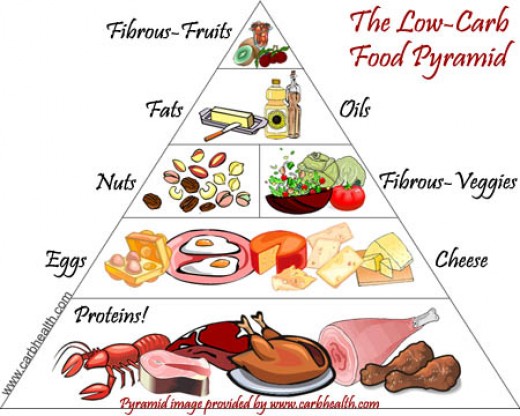A specialized eating plan is a great way to take the guesswork out of dieting. You’re told what to eat, how much to eat and how often to eat. But when certain foods, especially the ones you’re used to eating all the time, suddenly become off limits, meal planning can be frustrating.
Low-carb dieters, for example, have to pass on pasta, potatoes, white rice, white bread, sugar and even soft drinks. Once these favorites are off the menu, what’s left? If you don’t have a lot of cooking experience or time to prepare healthy meals, you may resort to bunless burgers and cheese cubes for every low-carb diet meal. While this may help with weight-loss goals, it won’t be long before you’re bored—and possibly deficient in some essential nutrients.

Luckily, cutting carbs can be done in a healthy, simple and satisfying way. Read on to learn how.
- Healthy – When choosing a diet, it helps to know how the program is meant to benefit you. The concept behind putting the brakes on the bread basket is fairly simple. Your body uses two substances to make energy: carbohydrates and fats. When you cut carbs, your body is forced to burn fat for fuel. So, in theory, a low-carb diet will bring about fat loss, with favorable changes in overall body composition. Remember, though, that some low-carb diets are high in fat, which may have a negative impact on cardiovascular and other areas of health. Always consult with your healthcare provider before beginning any diet.
- Simple – Most low-carb diet plans involve phases, which not only make them easier to follow but also address different needs as your body sheds pounds. Usually, a low-carb diet begins with a period of intense restriction to jump start weight loss and help break the body’s addiction to carbs. After a few weeks, you’ll gradually reintroduce a limited number of carbs and other previously restricted foods. This second phase promotes steady, long-term weight loss, and lasts until you reach your weight-loss goal. Once there, you’ll switch to the maintenance phase, which is intended to be a lifelong healthy-eating plan. If you choose a popular low-carb diet such as Atkins® or the South Beach Diet®, there are many resources available—from books to websites to online chat forums—to help you plan meals according to the phase you’re in.
- Satisfying – When you can’t stomach one more plate of bacon and eggs, or your cravings for sweets start keeping you up at night, indulge in one of the many bars, shakes or snacks now available for low-carb dieters. Specially made to fit low-carb diet plans, these pre-portioned foods fill you up, provide added nutrition and keep your taste buds happy. Sip on a creamy Atkins® Mocha Latte or Dark Chocolate Royale shake, or unwrap a Fudgy Chocolate Mint Snack Bar from South Beach Diet®—they’re the perfect light breakfast or mid-afternoon snack. Keep in mind that low-carb diet plans differ, so you may not be able to splurge on these sweet convenience foods until the second or third phase.
This article has been provided by the folks at Vitacost.com. Vitacost.com has been selling discount vitamins since 1994. Since then it’s grown into one of the biggest online marketplaces for healthy living essentials-with vitamins and supplements being just one of their many helpful categories! Get the best price on vitamins, nutritional supplements, health foods like cranberry beans and diet products. Vitacost.com’s customers mean the world to them, and it’s their goal to provide you with the best nutritional supplements, natural foods and sports nutrition to help with your health and wellness. Vitacost.com is not affiliated with this blog, and isn’t responsible for content outside of this article.

